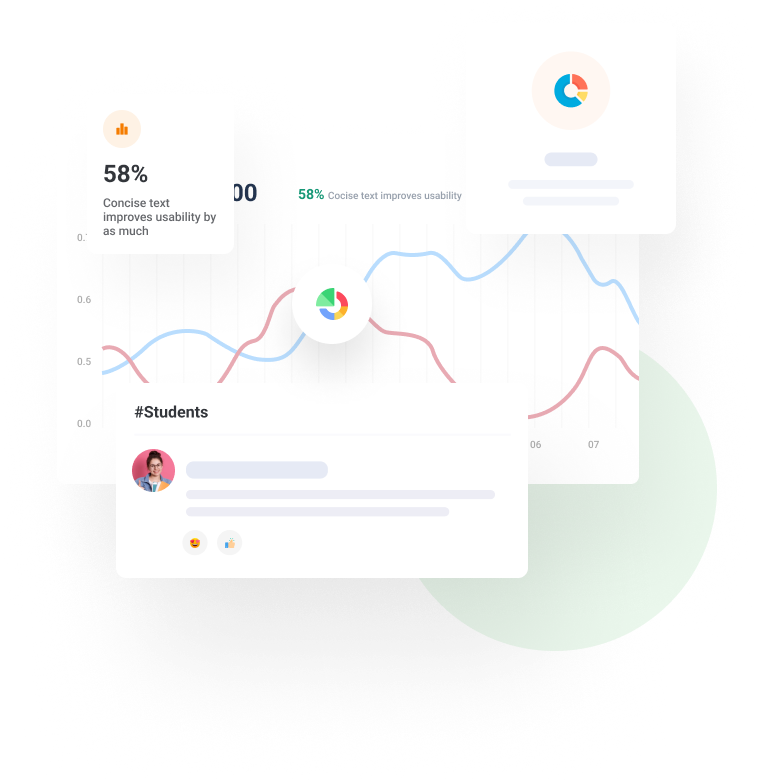Call Them “Student Hours” – A New Approach to Office Hours
As professors, we have two primary times when we interact with students, especially in engineering. One is the class time, of course. The other is office hours.
A few years ago a colleague suggested that I shouldn’t use the term “office hours.” You want to call it “student hours,” she said, since that time was meant for students.
I agreed, and thought: If we call them student hours, why should they take place in the office?
Move office hours out of the office – and into a student space
My larger classes have had as many as 200 students, so my office is never big enough to hold everyone who has questions, especially a few days before an exam.
Where we, as faculty, hold office hours is critically important. I want to create a community of learners and get my students working together. I want to go to them, not the other way around. The best place I found to do that is at the student lounge.
“Where we, as faculty, hold office hours is critically important. I want to create a community of learners and get my students working together. I want to go to them, not the other way around. The best place I found to do that is the student lounge.”
Professor Matthew Liberatore
I’ve actually asked students in the semester class survey where do they think office hours should be held?
About ninety percent of students answered that the student lounge, where I do them, is the best place. Many students added that they wished every professor held office hours in the student lounge. That convinced me I was on the right track.
Professor Matthew Liberatore’s Best Practices for Student Hours
- Leave your office
- Go to a student space
- Create informal teams
- Give “free” homework points for first participation
- Use whiteboards
- Reference students’ bios to build rapport
What do student hours look like in the student lounge?
The student lounge, of course, is not your office. So you can’t control it the way you could if held a one-on-one with a student sitting at your desk. But that’s okay.
Engage multiple students at once
When I’m in the student lounge, I actually have tables of three, five, even seven students, with whiteboards all around the room. And you’re not going to have just the students in your classes. My specialty is chemical engineering, and other chemical engineering students are hanging out at the student lounge, too, and working on their classes.
Sometimes upperclassmen will come over to me and say they remember taking my first year engineering course and tackling those problems, and wish life was that “easy” again – they love saying that.
So you’re instantly creating a friendly, welcoming space for your students in a way you could never do in your office. And you’re creating an environment that your students will want to return to.
“Cave” and “watering hole”
I recently read a book about rewiring education that stresses the need for both a “cave” and a “watering hole” to facilitate learning. To learn effectively, students need both – a cave to study on their own, and a watering hole where they can socialize with their classmates, and professors, and learn with them. The student lounge is the ideal watering hole.
“I recently read a book about rewiring education that stresses the need for both a “cave” and a “watering hole” to facilitate learning. To learn effectively, students need both – a cave to study on their own, and a watering hole where they can socialize with their classmates, and professors, and learn with them. The student lounge is the ideal watering hole. ”
Professor Matthew Liberatore
Give “free” homework points for attending
One of my homework assignments asks students to come into student hours at some point in the semester and work one problem on one of the student lounge’s whiteboards. They earn easy homework points for solving a problem and asking the professor at least one question..
Create informal teams
It’s not a hard assignment; they just have to show up and work a problem. And here’s the most important part – students don’t have to work alone. I encourage them to form informal teams. Their classmates, or even upperclassmen, hanging out in the student lounge can help them out. This type of engagement creates a culture of cooperation, not competition.
Use whiteboards
The students put up these engineering problems on the whiteboards, and keep erasing and repeating until they get the full solution. It may take one or two whiteboards filled with equations and diagrams. And the students are working together and figuring it out. It’s a beautiful thing.
Related Research
Breaking the tyranny of office hours: Overcoming professor avoidance
Students are people (so are professors)
Office hours held in the student lounge is the best opportunity to have individual and small group interactions with your students.
Students are people, as I like to say. They won’t recognize that you know them as a person until you know their names. That’s important, obviously, and lots of research demonstrates that learning names is a best practice for teaching.
But how do you get to know students beyond just memorizing their names? To me, building rapport is even more critical for student success.
Short student bios
On the first day of class I give my students homework points for sending me a photo and a short biography. I organize these files in the cloud.
When students come to the student lounge for student hours, I can pull up the bio and engage with the student. I’ll ask them to tell me where they’re from, or about the work they do at a store in town. I may let them know if other students in the program are from their town, high school, or part of the world. I’ll learn about their families or a volunteer project they’re proud of. These are great conversations that can lead into other discussions where I can encourage students to become more involved in our program, or even do undergraduate research.
Professors are people, too
And finally, I’ll say that your students will see you differently, too, through these interactions. Professors are people, as well – sometimes a little-known fact!
I often chat about my research, the other obligations of a professor, or professional societies I belong to. Or even that I love to bake. Maybe they do, too.
These conversations are really important. The comfortable informality of the student lounge helps facilitate learning by breaking down barriers between me and my students. I hope these ideas can help you and your students learn engineering and become better engineers.









